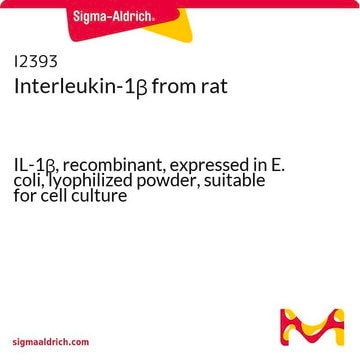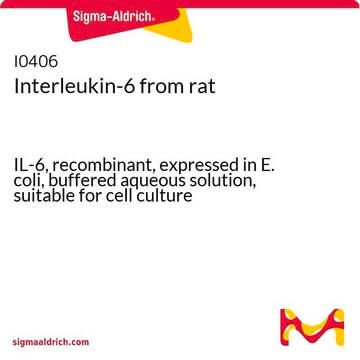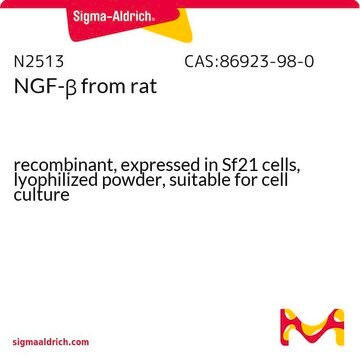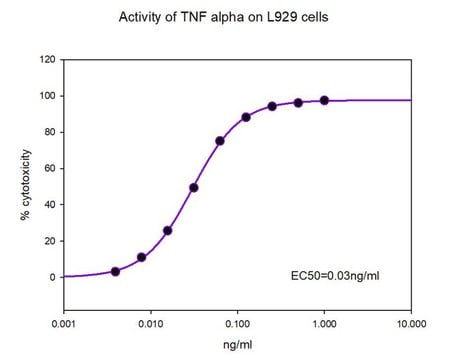T5944
Tumor Necrosis Factor-α from rat
≥98% (SDS-PAGE and HPLC), recombinant, expressed in E. coli, powder, suitable for cell culture
Synonym(s):
Cachectin, TNF-α
About This Item
Recommended Products
product name
Tumor Necrosis Factor-α from rat, TNF-α, recombinant, expressed in E. coli, powder, suitable for cell culture
biological source
rat
Quality Level
recombinant
expressed in E. coli
Assay
≥98% (SDS-PAGE and HPLC)
form
powder
quality
endotoxin tested
mol wt
predicted mol wt ~17 kDa
packaging
pkg of 10 μg
pkg of 50 μg
storage condition
avoid repeated freeze/thaw cycles
technique(s)
cell culture | mammalian: suitable
impurities
<1 EU/μgtested (LAL test)
color
white
solubility
water: soluble
UniProt accession no.
storage temp.
−20°C
Gene Information
rat ... Tnf(24835)
General description
Application
- To stimulate inducible nitric oxide synthase (iNOS) expression in the macrophages as an indication of M1 macrophage activation
- To study its effect on pancreatic β cell apoptosis
- To evaluate the effect of progesterone on the expression of tumor necrosis factor (TNF)-α in synovial membrane
- As a blocking antigen in the control, for immunohistochemical analysis
Biochem/physiol Actions
Physical form
Analysis Note
Storage Class Code
11 - Combustible Solids
WGK
WGK 3
Flash Point(F)
Not applicable
Flash Point(C)
Not applicable
Certificates of Analysis (COA)
Search for Certificates of Analysis (COA) by entering the products Lot/Batch Number. Lot and Batch Numbers can be found on a product’s label following the words ‘Lot’ or ‘Batch’.
Already Own This Product?
Find documentation for the products that you have recently purchased in the Document Library.
Customers Also Viewed
Our team of scientists has experience in all areas of research including Life Science, Material Science, Chemical Synthesis, Chromatography, Analytical and many others.
Contact Technical Service










